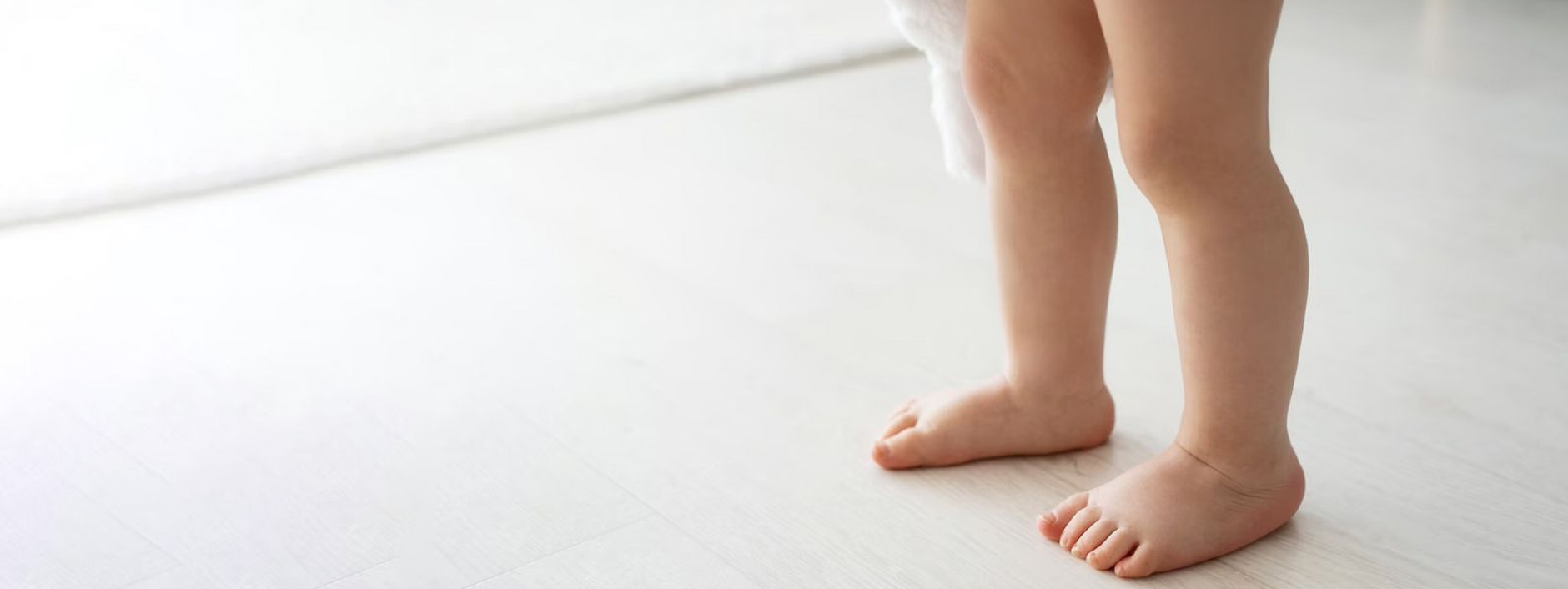What exactly are flat feet?
Flat feet, commonly known as “pes planus” or “fallen arches,” are a disorder in which the foot arches seem flattened or non-existent. There is a little difference in the typical foot. When the foot is put on the ground, it forms an arch along the inner side. This arch aids in the distribution of body weight and the absorption of stress during activities such as walking and running.
Flat feet are typically classified into two types:
- Flexible Flat Feet: The arch is present in this kind but collapses when weight is applied, such as when standing. When not bearing weight, these feet frequently appear normal.
- Rigid Flat Feet: The arch is absent in this case, both when weight is applied and when it is not. Rigid flat feet are less prevalent and may be linked to other medical issues.
Detecting Flat Feet in Children
Recognizing your child’s flat feet is the first step toward resolving the problem. Watch for the following signs and symptoms:
- Foot Fatigue: Symptoms of fatigued or achy feet, often after strenuous activity.
- Pain: Pain along the inside of the ankle, arch, or calf, especially during or after physical activity.
- Walking Abnormalities: Changes in your child’s stride that are noticeable, such as excessive rolling inward (overpronation) or outward (supination).
- Footwear Difficulties: Excessive wear on one side of the sole of a shoe, for example, may signal a problem.
- Appearance: If your child’s feet appear flat when standing or if the arches appear to touch the ground, then this is an obvious sign.
Recognizing Causes and Risk Factors
Flat feet in children can be caused by a variety of factors such as heredity, developmental difficulties, and injuries. The following are some of the most common causes and risk factors:
- Genetics: If one or both parents have flat feet, their child is more likely to inherit the problem.
- Development: Arches may not fully develop until later in life in some situations.
- Trauma or injury to the foot or ankle can also result in flat feet.
- Medical Disorders: Flat feet can be caused by disorders such as Ehlers-Danlos syndrome or Down syndrome.
Should You Be Worried?
Flat feet, especially in toddlers, are not usually a cause for concern. Many children grow out of the illness on their own as they get older. However, if your child is in pain or suffering as a result of flat feet, it is critical that you seek professional advice from a physician or podiatrist. They can help identify the severity of the problem and, if necessary, offer suitable therapy.
Managing Kids with Flat Feet
The good news is that many kids with flat feet do not need treatment because the issue usually heals on its own. However, if your child is in discomfort or agony, there are various techniques for efficiently managing flat feet:
- Supportive Footwear: Make sure your child is wearing shoes with appropriate arch support and cushioning.
- Shoes with high heels or little arch support should be avoided.
- Inserts for Orthotics: Orthotic insoles, whether custom-made or off-the-shelf, can give additional support and comfort.
- Exercising and Stretching: Simple stretching exercises and physical treatment may help increase foot and ankle muscle strength and flexibility.
- Weight Control: Maintaining a healthy weight can help to avoid foot strain and discomfort.
- Check-ups on a Regular Basis: Make appointments with a pediatric orthopedic doctor on a regular basis to keep an eye on your child’s health.
- Surgery (in exceptional cases): Surgical procedures are usually contemplated only in extreme circumstances where conservative therapy has failed.
Educating Your Child
It’s critical to have open and supportive dialogues about your child’s flat feet. Inform them that it is a common ailment and that with proper care and support, they can maintain an active lifestyle. Encourage them to speak up if they are in pain or discomfort so that you can treat it as soon as possible.
Conclusion
Children’s flat feet are a common and often harmless disorder. You can protect your child’s growth by staying informed, recognizing warning signals, and seeking expert help when necessary. Remember that each child is unique, and the ideal way to manage flat feet may differ from one person to the next. Your child can continue to explore the world on healthy and happy feet with your love, support, and appropriate care.



 9 Min Read |
3372
9 Min Read |
3372